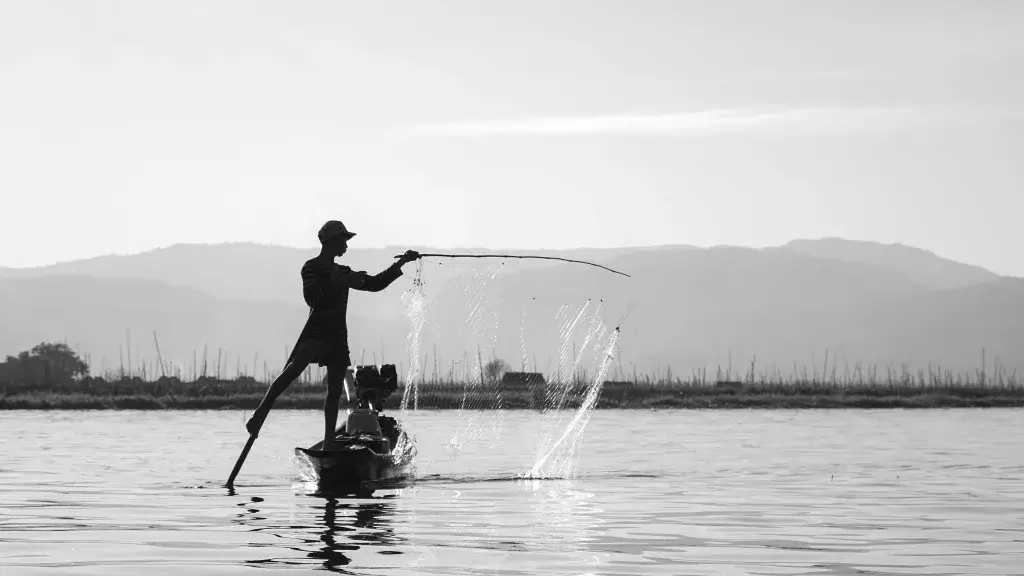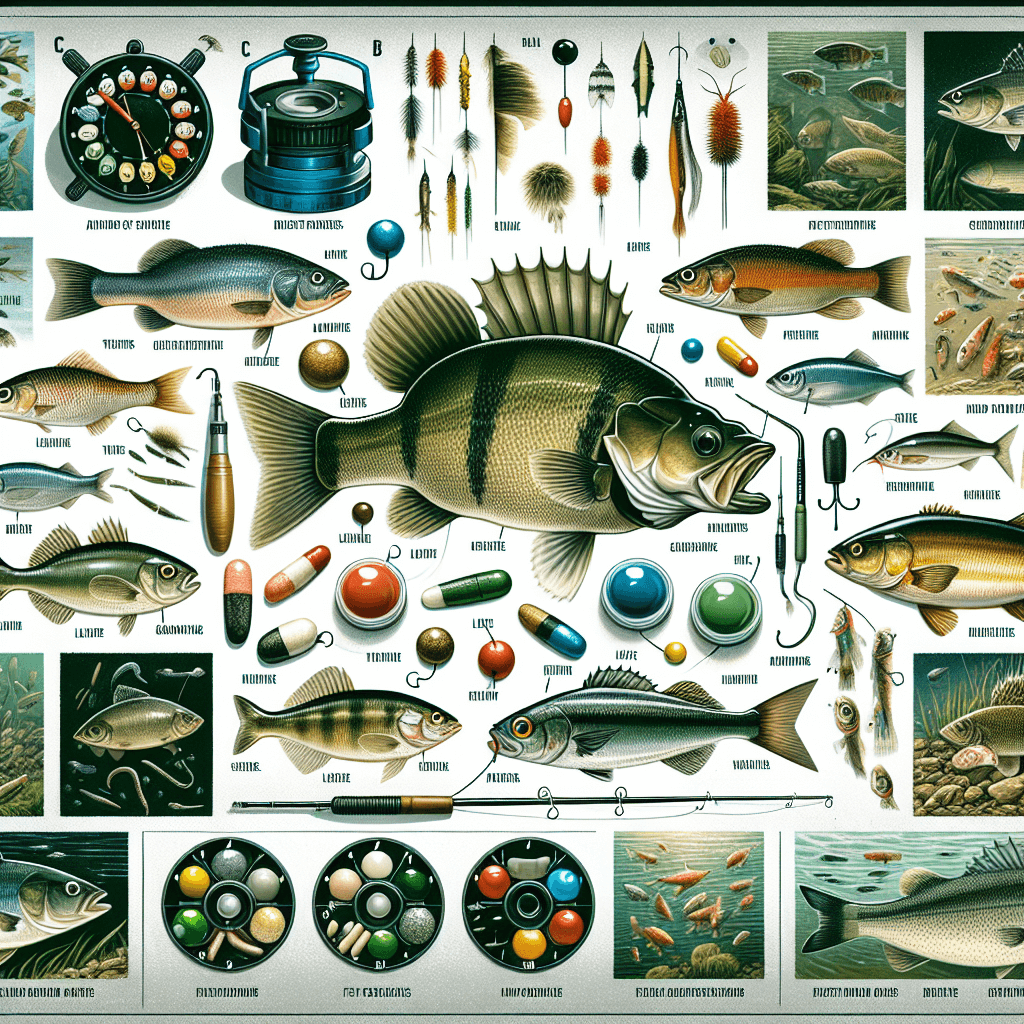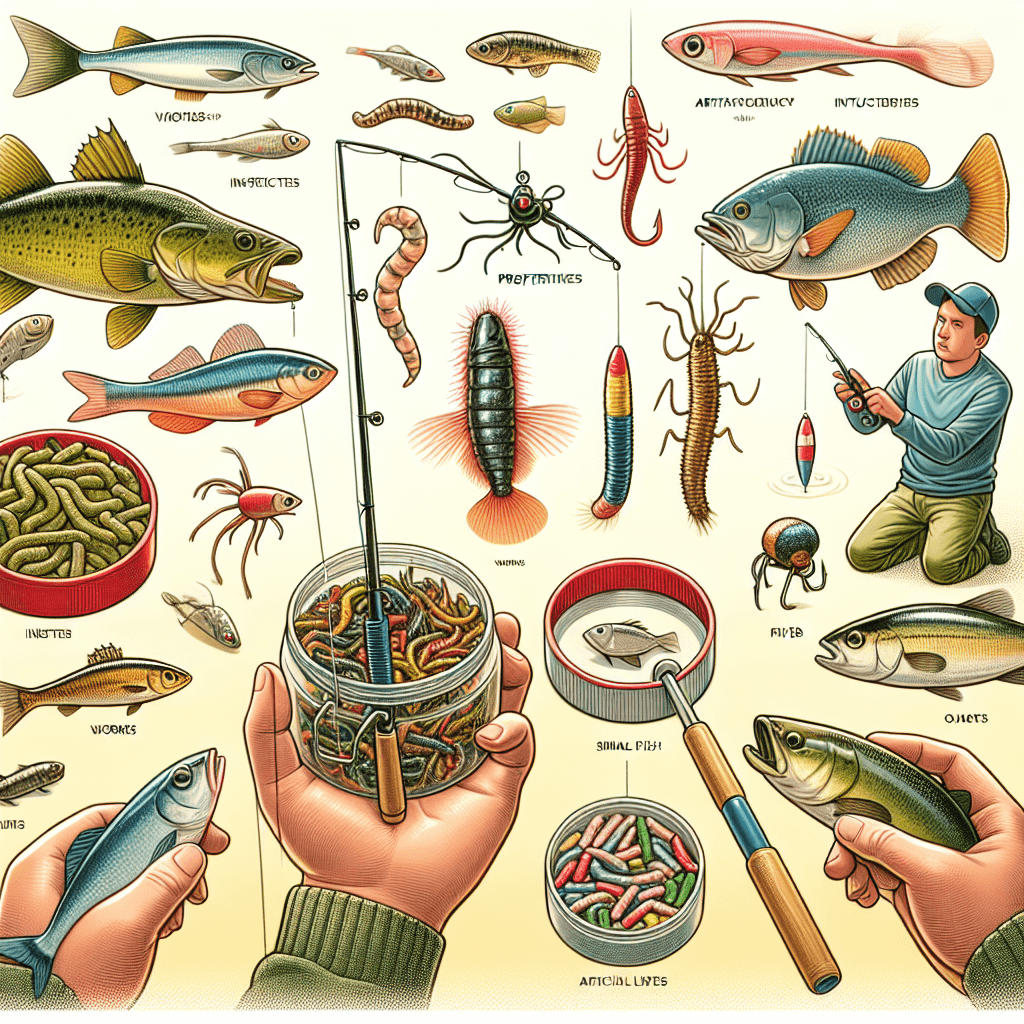Essential Tips for Choosing the Right Bait
If you’re a fishing enthusiast searching for the perfect bait to reel in your target fish species, look no further! This article will provide you with a comprehensive overview of the key factors to consider when selecting the most effective bait for your desired catch. From understanding the preferences and feeding habits of different fish species to examining environmental factors and the characteristics of various bait options, we’ve got you covered. So, get ready to enhance your fishing game and increase your chances of a successful catch with our expert advice!
Understanding the Fish Species
When it comes to selecting the right bait for a specific fish species, it is essential to start by researching and understanding the fish you are trying to catch. This will give you insight into its feeding habits, preferred prey, and the water conditions it thrives in.
Researching the Fish Species
Take the time to gather information on the specific fish species you are targeting. Learn about their biological characteristics, such as their size, behavior, and habitat. Understanding their natural environment is crucial to choose the most appropriate bait for them.
Identifying Feeding Habits
Fish have different feeding habits, and knowing this is fundamental in bait selection. Some fish are primarily bottom feeders, while others prefer to stay higher up in the water column. By identifying the feeding habits of your target fish, you can adjust your bait presentation strategy accordingly.
Analyzing Preferred Prey
Each fish species has its preferred prey. Some may feed on insects, others on small fish, and some on crustaceans. By researching and analyzing the preferred prey of your target fish, you can select bait that closely resembles its natural food source, increasing the chances of getting a bite.
Considering Water Conditions
Water conditions play a significant role in bait selection. Factors such as temperature, clarity, and current speed can influence how fish respond to a particular bait. In warmer water, for example, fish may be more active and require faster-moving baits. Understanding the optimal water conditions for your target fish will help you select the most effective bait.
Bait Presentation
Once you have a good understanding of the fish species you are targeting, it’s time to focus on bait presentation. How you present your bait can greatly impact your chances of success.
Matching Bait to Fish’s Natural Food
To attract fish effectively, it is crucial to match your bait to the fish’s natural food. For example, if you are targeting a species that predominantly feeds on insects, using bait that imitates the size, shape, and movement of insects will help increase your chances of a successful catch.
Analyzing Bait Appearance
The appearance of your bait can make a significant difference in attracting fish. Pay attention to details such as color, texture, and brightness. Fish are attracted to baits that mimic the appearance of their natural prey, so choose bait that closely resembles what the fish are accustomed to eating.
Assessing Bait Movement
The movement of your bait can also influence how fish respond. Some fish are more likely to bite when the bait is moving, while others prefer a more stationary target. Experiment with different techniques, such as jigging or using a bobber, to find the bait movement that works best for your target fish.
Understanding Depth Preferences
Different fish species have varying depth preferences, meaning they prefer to feed at specific depths in the water. Understanding these preferences can help you select the right bait and adjust your presentation technique. Some fish may be found near the surface, while others may be closer to the bottom. By identifying the appropriate depth, you can increase your chances of attracting the fish you are targeting.

Bait Types
With so many options available, it’s essential to consider the different types of bait and their effectiveness for your target fish species.
Live Bait Options
Live bait, such as worms, minnows, or leeches, can often be highly effective in attracting fish. The natural movement and scent of live bait make it enticing for many species. However, keep in mind that using live bait may require additional care to keep it alive and healthy.
Dead Bait Options
Dead bait, such as cut bait or whole fish, can be an excellent choice for certain fish species. The scent and texture of dead bait can be irresistible to predatory fish that rely on the smell of decaying food as a cue to feed.
Artificial Lures
Artificial lures come in a wide variety of shapes, sizes, and colors, and are designed to mimic the movement and appearance of natural prey. They can be highly effective in fooling fish into biting. Experiment with different types of lures, such as crankbaits, soft plastics, or spinnerbaits, to see which ones work best for your target species.
Natural Baits
Natural baits, such as corn, cheese, or bread, can be an affordable and easily accessible option. These baits can be effective for certain species, particularly those that are less selective in their feeding habits.
Processed or Commercial Baits
Processed or commercial baits, such as prepared dough baits or scented baits, can be convenient and have proven to attract fish. These baits often contain strong scents or flavors that entice fish and can be particularly effective in challenging fishing conditions.
Bait Size and Shape
Selecting the right bait size and shape is crucial to increase your chances of success. Consider the following factors when choosing the appropriate bait.
Matching Bait Size to Fish’s Mouth
One key consideration is to select a bait size that fits the fish’s mouth. A bait that is too small may not be enticing enough, while a bait that is too large may be difficult for the fish to swallow. Research the size range of your target species and choose baits accordingly.
Considering Fish’s Vision
Different fish species have varying visual capabilities, and this should be taken into account when selecting bait. Some fish have excellent vision and can detect smaller details, while others rely more on movement and scent. Understanding the visual capabilities of your target fish will help you choose baits that are more likely to attract attention.
Assessing Appropriate Bait Shape
The shape of the bait can also affect its appeal to fish. Some fish species are more likely to bite on baits that resemble their natural prey’s shape, while others may be attracted to a broader range of shapes. Experiment with different bait shapes to find what works best for your target species.

Seasonal Considerations
As the seasons change, so do fish behavior and feeding patterns. Understanding these seasonal patterns will help you adapt your bait selection strategy accordingly.
Adapting to Seasonal Patterns
Different fish species exhibit different behaviors and feeding patterns depending on the season. For example, during the spawning season, some fish may be more aggressive and territorial, while in colder months, their activity levels may decrease. By understanding these seasonal variations, you can adjust your bait selection and presentation to match the fish’s behavior.
Understanding Fish’s Behavior in Different Seasons
Each season presents unique challenges and opportunities for anglers. Research how your target fish species behave in different seasons. By understanding their migration patterns, preferred depths, and feeding habits during specific times of the year, you can increase your chances of success by selecting bait that appeals to their behavior.
Selecting Bait Colors
The color of your bait can significantly impact its visibility and effectiveness in attracting fish. Consider the following factors when selecting bait colors.
Understanding Fish Vision and Color Perception
Different fish species perceive colors differently. While some fish have a more limited color range, others can see a broader spectrum. Understanding the color perception of your target fish species will help you choose bait colors that are more likely to grab their attention.
Using Natural or Contrasting Colors
Natural colors that closely resemble the fish’s natural prey can be effective in attracting fish. However, using contrasting colors can also be advantageous, as they can stand out more in the water and catch the fish’s attention. Experiment with both natural and contrasting colors to determine which ones work best for your target species and fishing conditions.

Availability and Cost
When selecting bait, it’s important to consider its availability and cost. Here are some factors to keep in mind.
Considering Bait Availability
The availability of certain baits may vary depending on your location and the time of year. Consider the local availability of bait options when making your selection. While live bait options may be readily available in some areas, others may require you to purchase or prepare them in advance.
Evaluating Cost-Effectiveness
Different baits vary in cost, and determining their cost-effectiveness is essential. Consider factors such as durability, longevity, and effectiveness when evaluating the cost of bait options. Balance the quality of the bait with your budget to ensure you get the most value for your money.
Local Fishing Regulations
Before selecting bait, it’s crucial to familiarize yourself with local fishing regulations. The regulations may dictate specific bait restrictions, including size or quantity limitations.
Understanding Fishing Regulations
Different bodies of water may have specific regulations in place to protect fish populations and their habitats. These regulations can vary from catch limits to bait restrictions. Research and understand the fishing regulations in your area to ensure you comply with all requirements.
Complying with Size and Quantity Restrictions
Be aware of any size or quantity restrictions when selecting bait. Some fishing regulations may limit the size or number of hooks, or impose restrictions on the use of certain baits. Adhering to these regulations ensures the sustainability of fish populations and contributes to responsible angling practices.

Experimentation and Personal Experience
While researching and considering various factors is valuable, personal experience and experimentation can make a significant difference when selecting the right bait.
Trial and Error Approach
Fishing can be a game of trial and error, and the same goes for bait selection. Every fishing scenario is unique, and what works for one angler may not work for another. Be willing to experiment with different baits and techniques to find what works best for you and your target fish species. Keep an open mind and be prepared to adjust your approach based on the results.
Keeping a Log of Successful Baits
Keeping a fishing log is an excellent way to track your successes and failures. By recording the baits that have worked well in different fishing situations, you can create a reference guide for future trips. Note the bait type, size, color, and presentation technique that caught fish. Over time, you will be able to identify patterns and trends that can guide your bait selection in the future.
Environmental Impact
Finally, it is important to consider the environmental impact of your bait selection and fishing practices. Responsible anglers strive to minimize pollution and avoid harming the ecosystem.
Minimizing Pollution and Litter
Use baits that are environmentally friendly and minimize pollution. Avoid using baits that contain harmful chemicals or non-biodegradable materials. Ensure you properly dispose of any bait packaging and minimize littering while fishing.
Avoiding Invasive Species
When selecting bait, be mindful of the risk of introducing invasive species to new water bodies. Some baits, such as live bait, can carry non-native species that can disrupt local ecosystems. Whenever possible, use locally sourced bait to minimize the risk of introducing invasive species.
By considering these key factors when selecting the right bait for a specific fish species, you can enhance your chances of a successful fishing trip while also preserving the environment and adhering to fishing regulations. Remember to gather knowledge about the fish species, their feeding habits, and preferred prey, and consider water conditions when choosing the most suitable bait. Pay attention to bait presentation, type, size, and shape to effectively attract your target species. Adapt to seasonal patterns and consider bait availability and cost. Comply with local fishing regulations, keep a log of successful baits, and minimize environmental impact. With these considerations in mind, you can improve your fishing experience and increase your chances of reeling in the perfect catch.

